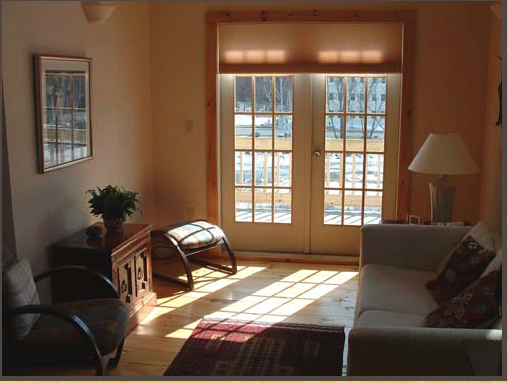 |
| home |
When meeting a therapist for the first time, clients are looking for clues on how professional this therapist is. No wonder they're looking at their therapist's immediate environment (their office) for those clues.
Studies have shown that people judge the quality of their therapist by the way their office looks. Clients also mostly agree on what would an office of a good therapist would or wouldn't look like. So here's a summary of what a "good therapist" office should look and feel:
- Organized, orderly. clean - People often come to a therapist to acquire a sense of order and control over their life. n orderly and neat office not only helps a client relax and feel at ease, but also reflects on the therapist's sense of control. A cluttered office is distracting, evokes feelings of nervousness and reflects badly on the professional abilities of the therapist.
- Warm and inviting. calm. - soft fabrics, comfortable chairs, a warm area rug, dim lighting and a soft, warm color scheme help create a welcoming and comfortable environment. A space that feels a little bit like home, but not quite.
 |
| source |
- Lighting - people tend to speak more openly when the lights are dimmed. They feel less exposed. Use standing or table lamps instead or in addition to ceiling lights. Wall sconces are great too, though more expensive to install. Always use dimmers. In some situations more light is needed than others (sunny vs. overcast days)
- Personalize your office - displaying diplomas and awards makes the therapist appear more qualified to their clients. Moreover, displaying personal items can make the therapists themselves feel more comfortable, thus enhancing their clinical effectiveness. After all, this is your office, and therefore it should express who you are - your unique personality and professional strengths.
- Clocks - placing them in a way that clients can or cannot see them is important.
- Eliminating outside distractions - window views: if your office is overlooking a busy street you may want to use window treatments that will create privacy, avoid outside distractions and will still allow natural light to shine in. Partly sheer roller shades can be an option. Any external noise or thermal discomfort will have an effect on the ability of the client and the therapist to focus on the session.
- Chairs - the kind of chairs (beanbags or upholstered lounge chairs), where they are placed in relation to the therapists chair are all important aspects of the therapy and should be considered.
- Flexible furniture plan - a therapist that counsels individuals as well as family and couples will need to quickly shift the furniture around to create more or less seating.
- Adjust the look of your office to the kind of therapy you practice - the picture of the room below shows a very relaxed, even exotic setting, which could work for some therapists, and not others.

If you need help with creating your own office, feel free to contact me:
vered@veredrosendesign.com
617-5849965
617-5849965


No comments:
Post a Comment